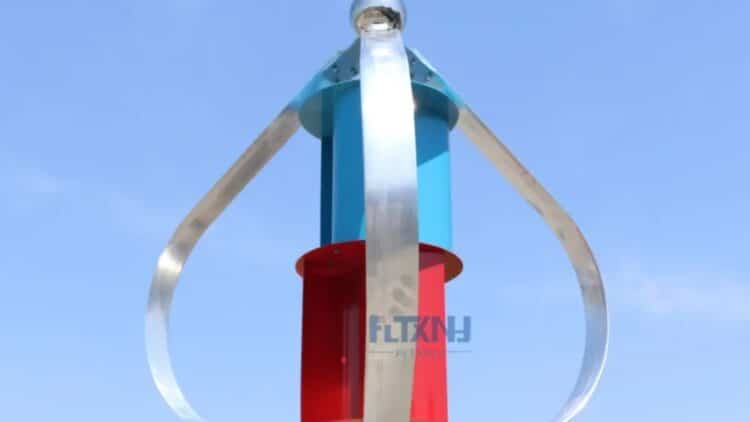Imagine generating the same energy as a good solar panel system, but without covering your entire roof. No, we’re not talking about a giant wind farm in the middle of nowhere. We’re talking about something that fits in your backyard, on top of a building, or even on a boat, a small wind turbine that can deliver up to 3,000 W of power.
When quiet power meets smart design
In recent years, vertical wind turbines have begun to gain traction outside of industrial projects. What once seemed unfeasible for residential use due to noise, cost, and complicated maintenance has now become a practical and efficient solution for generating clean energy on a small scale. This revolution has come with new designs, lighter materials, and smarter generators. What sets it apart from so many others on the market:
- Minimum starting speed: Less than 1.3 m/s.
- Vertical design: Takes up less space, is more stable, and is safer for birds and the structure itself.
- Durability: Up to 20 years of service life, with a 1-year warranty.
- Hybrid efficiency: Can be combined with solar panels, creating a system that produces energy day and night.
- Installation versatility: Works in homes, boats, streetlights, and even open commercial areas.
The device that brings it all together is the Q 3000W Vertical Wind Turbine Generator, a compact system with enough power to supply a significant portion of an efficient home’s energy needs. To achieve this, the model uses three external blades made of aluminum alloy, connected to a permanent magnet generator without direct contact. Furthermore, the electromagnetic control system automatically adjusts operation according to wind intensity.
Numbers don’t lie: Why this turbine is a game changer for home energy
But it’s not enough to simply say the turbine is “powerful,” because it’s in the numbers that it truly shows its worth. With a nominal power of 3,000 W and a maximum capacity of 3,200 W, it delivers enough energy to supply most of the needs of a well-designed home. Not stopping there, the safe cutting speed of up to 45 m/s ensures that, even in more intense gusts, the equipment continues to operate in a stable and protected manner (just like this first typhoon turbine in Japan).
Its rotor, measuring 3.3 meters in diameter, is designed to capture maximum wind energy, while its total weight of less than 520 kg facilitates installation and reduces the need for extremely robust structures. All these numbers and more technical terms translate into three main scenarios where this turbine excels:
- Homes with limited space: Can be installed on 9m towers or top of buildings.
- Hybrid designs: Combined with solar panels to make the most of cloudy days or nighttime hours.
- Locations with irregular winds: The vertical design is less sensitive to sudden changes in wind direction.
Why wind power is the perfect partner for solar energy
We need to keep in mind that solar panels are excellent, but they depend on the sun, and it doesn’t shine all the time. A turbine like this provides continuous generation, compensating for the drop in photovoltaic production at night or on very cloudy days. Its advantages include constant energy production, a smaller footprint, low maintenance, and a reduced environmental impact.
Imagine a system that, throughout the year, keeps its consumption covered even during weeks of no sunlight. This is what wind, combined with the right technology, can do. There’s the energy resilience factor. In other words, in times of blackouts or grid instability, a wind system can guarantee autonomy even without relying on sunny weather. Imagine a combination of the first AI wind turbine triple power yield that has arrived in the US.


